Tuff is a volcanic rock consisting of consolidated volcanic ash. It is a product of explosive volcanic eruptions. It can be considered to be a volcanic analogue of sandstone. Both sand grains and volcanic ash grains have a diameter between 1/16…2 mm. However, the term is often used for many pyroclastic rocks (pyroclasts are fragments thrown out of volcanoes during explosive eruptions — ash, lapilli, bombs, blocks) that contain fragments a lot larger (or smaller) than 2 mm (1/16 mm). Sometimes the term is used even for consolidated material that has undergone limited posteruption reworking1. This is not only that the general public is using the term too loosely, but geologists too use terms like “lapilli tuff” and “tuff breccia” that contain lots of larger pyroclastic material.

Classification of polymodal (consisting of differently sized pyroclasts) pyroclastic rocks. This rock in the strict scientific usage is on the lower right corner with ash tuff (mean diameter of pyroclasts less than 1/16 mm which is analogous to siltstone). At least 75% of the pyroclastic material of these rocks has a mean diameter less than 2 mm. Lapillistone is mostly composed of lapilli (more than 75%), pyroclastic breccia (agglomerate) are mostly composed of volcanic blocks (bombs). Tuff breccia and lapilli tuff are more mixed polymodal pyroclastic rocks. Figure drawn by the author, data (classification principles) taken from Le Maitre, 20052.
Pyroclastic material deposited from pyroclastic density currents (pyroclastic flows) is known as ignimbrite. Ignimbrite can be considered to be a special type of tuff (it is sometimes known as welded tuff although not all ignimbrites are welded).
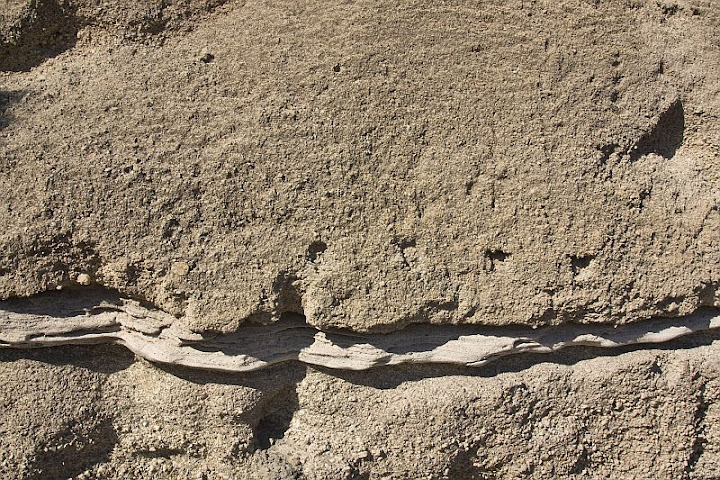
Thin layer of light-colored tuff between layers of lapilli tuff. Tenerife.

Close-up of the thin tuffaceous layer shown above. It is mostly composed of consolidated volcanic ash but contains also significant amounts of fine-grained lapilli (pyroclastic analogue of gravel). Width of view 13 cm.

Crystal tuff from La Palma. Width of sample is 5 cm.

A sample from Armenia. Width of sample is 13 cm.
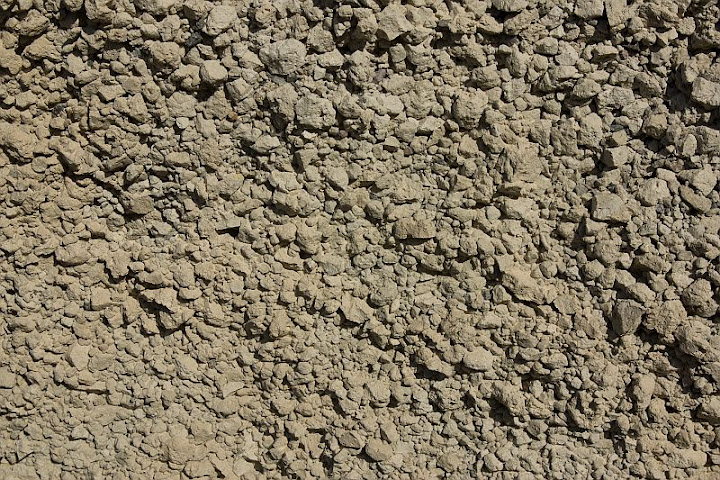
Lapillistone from Tenerife. It is composed of lapilli-sized pumiceous pyroclasts with very little ash between them. Width of view 55 cm.

Phreatomagmatic tuff breccia from Germany. Phreatomagmatic eruption is an explosive volcanic eruption caused by interaction of ground water and magma3. Width of view is 12 cm.

Tuff is basically a volcanic sedimentary rock. As many sedimentary rocks, it is also often layered. The Massif Central, France.

An outcrop of lapilli tuff. It is a remnant of quarried tuff cone. La palma, Canary Islands.
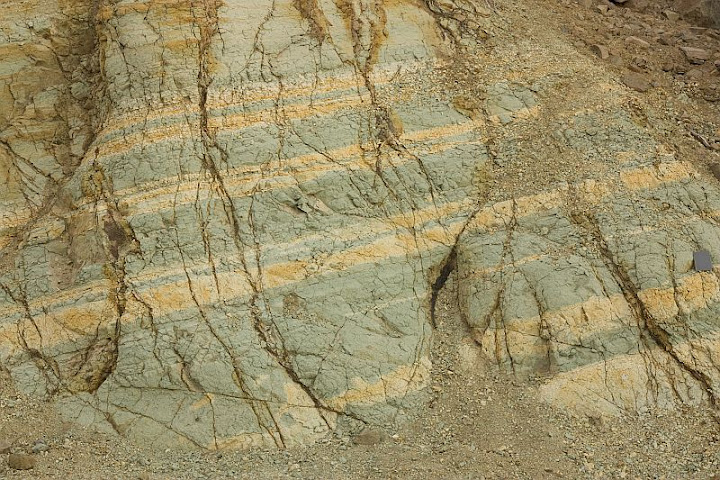
Hydrothermally altered tuff (it could be reworked material) in Tenerife. Gray card for scale (longer edge 9 cm).
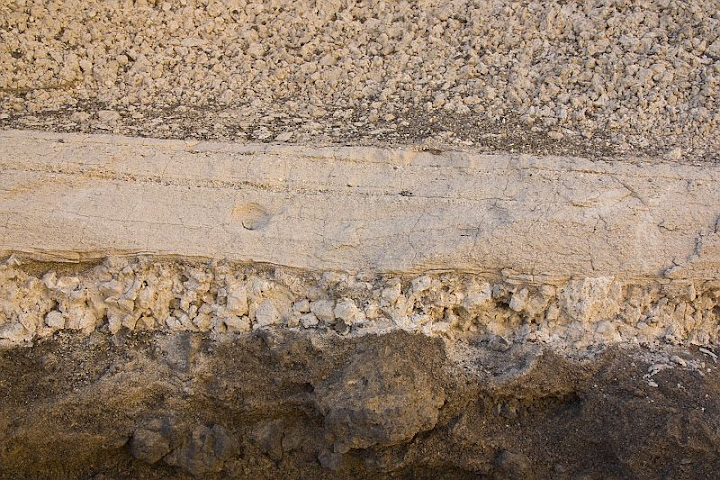
Mafic scoria below (probably lapilli tuff). On top of it is a thin layer of pumiceous lapillistone and then tuffaceous composed of fine pumice shards. On top of it is again a layer of pumiceous lapilli tuff. Tenerife. Width of view 80 cm.
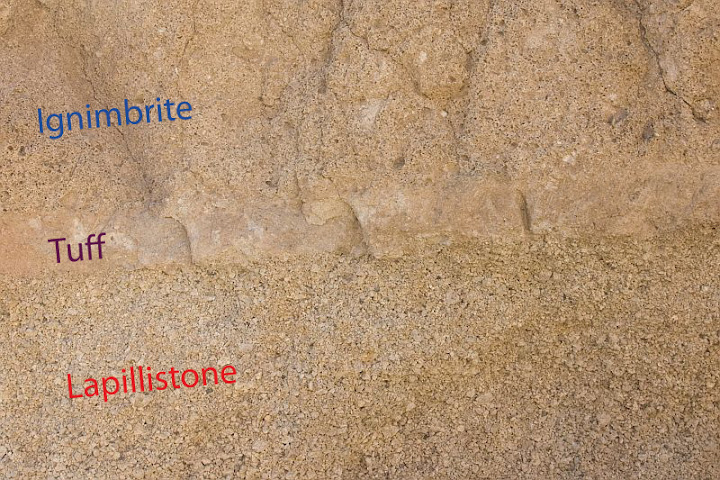
Lapillistone, tuff, and unwelded ignimbrite. Tenerife. Width of view 1.8 meters.

An outcrop of unwelded ignimbrite in Tenerife.

An outcrop of welded ignimbrite. Southern coast of Gran Canaria.

Close-up of Tenerife ignimbrite. It contains pseudovesicules that were formerly filled with pyroclasts of phonolitic pumice. Width of view is 40 cm.

Ignimbritic lithic breccia (tuff breccia) in Tenerife. Width of view 0.8 meters.

Pyroclastic layers of scoria and pumice (lapilli tuff) in Tenerife. Pumice layer is a product of violent plinian eruption farther away. Scoriaceous mafic dark-colored lapilli were ejected from nearby vents (strombolian eruptions). Width of view is 12 meters.
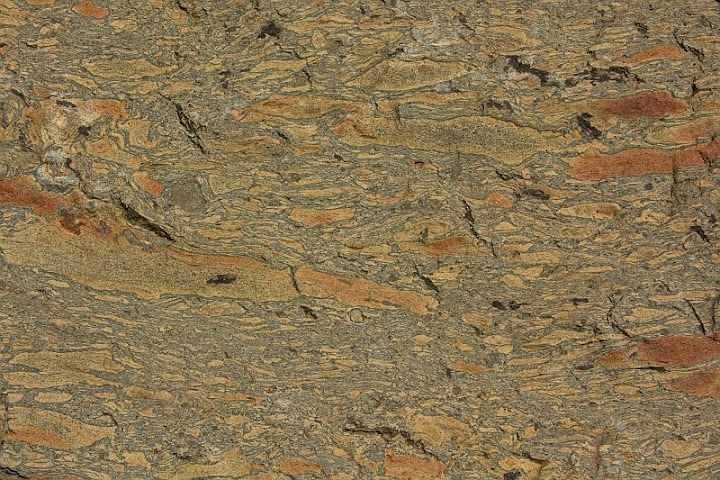
Ignimbrite with flattened pumice lapilli (fiamme) from Gran Canaria. Pyroclasts deposited by pyroclastic flow were so hot after deposition that they fused together and started to flow as a very viscous liquid. Width of view 12 cm.
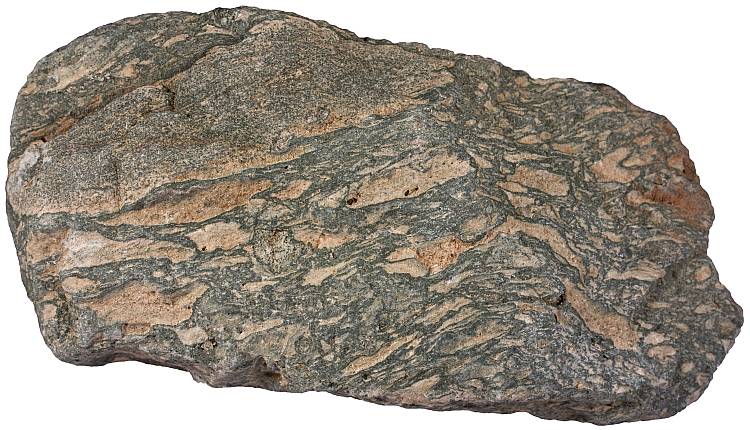
A hand sample of ignimbrite from Gran Canaria with prominent fiamme (flattened pumice lapilli). Width of view 9 cm.

Block-and-ash flow deposit is a type of ignimbrite that forms as a result of non-explosive collapse and fragmentation of volcanic domes that provides angular volcanic blocks to the flow. It is a tuff breccia according to the classification diagram above. Blocks are about 10-25 cm in width.
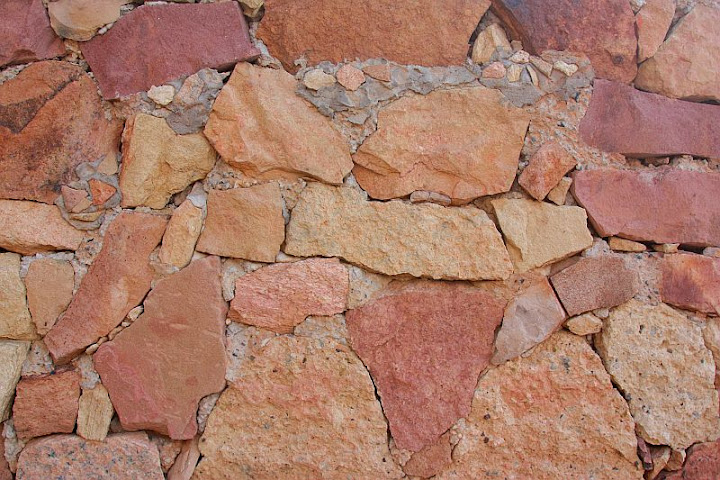
Tuff is a popular building stone where it is available because it is relatively easy to cut and shape. Gran Canaria.

And finally a picture of tufa which has nothing to do with the topic of this post. There is just a linguisting similarity between the rock names. Tufa is actually just a type of soft and porous chemically precipitated limestone, usually associated with springs. Width of the sample from Estonia is 13 cm. Green lithic fragments are pieces of glauconitic sandstone.
This rock has been used as a building material since ancient times. It is relatively soft and therefore easy to work with. The famous statues on the island of Rapa Nui (Easter Island) are carved from this material.
References
1. Tilling, Robert. (2007). Tuff. In: McGraw Hill Encyclopedia of Science & Technology, 10th Edition. McGraw-Hill. Volume 18. 680-682.
2. Le Maitre, R. W. (2005). Igneous Rocks: A Classification and Glossary of Terms: Recommendations of the International Union of Geological Sciences Subcommission on the Systematics of Igneous Rocks, 2nd Edition. Cambridge University Press.
3. Jackson, J. A. (1997). Glossary of Geology, 4th Edition. American Geological Institute.
I would be very pleased to receive clear images of all types of rocks .
Best regards
Bahman
Check out the article Rock Types